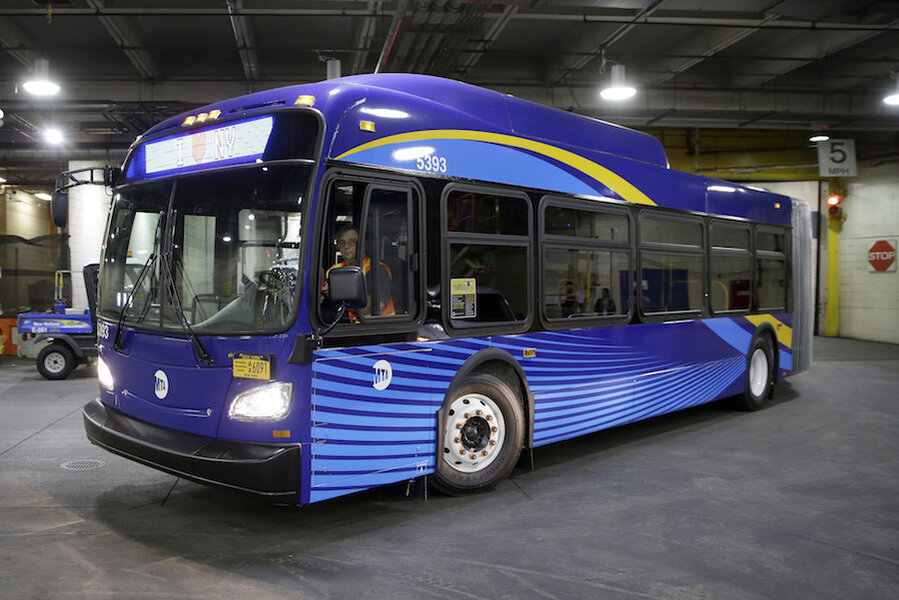Free WiFi, phone chargers, cooler design – can NYC make buses hip?
Loading...
The Metropolitan Transportation Authority (MTA) has embarked on an ambitious plan to modernize public transportation in New York.
On Tuesday, New York Gov. Andrew Cuomo (D) announced the first next-generation public transit bus had arrived in New York City. The bus is the first of 75 that will be launched this year to address a growing problem of out-dated and overcrowded transport in the region with more modern designs and digital features to satisfy an increasingly wired public.
The buses are one part of a sweeping technological reform for the dated MTA. Thousands of new buses, new ways of buying tickets, and more general updates are aimed at revamping public transportation in the Big Apple.
But can public transit really keep with the times? The MTA is trying.
"Today, we are reimagining the MTA for the 21st century and creating a transit system that will meet the needs of the next generation of New Yorkers," Governor Cuomo said in an MTA press release. "With our unprecedented MTA capital plan, we are building for the future with major initiatives that will improve the commute of millions of New Yorkers, reduce overcrowding and bring new technology to our subways, buses and railroads. New York is investing in the MTA like never before, and together we are recapturing the boldness and ambition that made this the Empire State in the first place."
The MTA is the largest transportation network in the country, commuting over a 5,000-square-mile area with 15.2 million people. In total, the agency has a fleet of 5,667 buses that service more than 2 million riders on an average weekday, according to MTA statistics. Of those, 2,042 buses are now set to be replaced with new, high-tech models over the next five years.
All of the new buses will have free WiFi for passengers and USB charging ports line the top of the buses above the windows. Thousands of buses new and old will also be fitted with new information screens.
Beyond the technological, the buses are also outfitted with a new paint job – a bold blue base, with light blue and yellow stripes.
"I am not a design expert, but I think it is a good looking bus," Cuomo said to the New York Daily News. "I like the blue, I like the sense of motion and the graphics. It is sophisticated yet not tedious; it is playful but serious."
Also at the announcement event, a new free app that will allow riders to buy tickets for metro and train lines via their phones was shown to have successfully passed its first field test. It would be available for all riders by the end of 2016.
"We see the debut of these new buses and the roll out of the MTA eTix field test as important steps forward as we continue to renew, expand the transit system and create an enhanced experience for our customers."
The new buses and MTA eTix app are just one part of a bold and expensive ($29 billion) new Capital Project that was passed in October 2015 to revitalize the MTA.
From 2015-2019, the MTA will spend billions on new subway cars, trains, and buses, as well as improving infrastructure and updating stations. Approximately $21.6 billion will be spent on core investments for the agency, $4.5 billion on subway and access projects, and $2.9 billion for MTA bridges and tunnels, according to the MTA.
Other projects funded by the Capital Program include updating each subway station with public WiFI by the end of 2016 and an upgrade to the current MetroCard payment system over the next five years.
Who is carrying the burden for the costs? The plan is split between the MTA ($11.8 billion), New York State ($8.3 billion), the Federal government ($6.4 billion), and New York City ($2.5 billion).
"This is about doing more than just repair and maintain – this is thinking bigger and better and building the 21st-century transit system New Yorkers deserve," Cuomo said in January.








